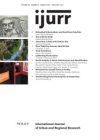This article advances a conceptualization of spatial distinction that, following Bourdieu, relates principles of division in ‘social space’ with formations of segregation in urban space. It applies this interpretive framework to concisely narrate the one hundred years’ history of spatial distinction in Tel Aviv. Analyzing five moments in the city’s development, it focuses on a dominant principle of distinction in each period and its ensuing segregations: predominantly ethno‐national (Jewish–Arab) distinction that established Tel Aviv in opposition to Jaffa at the turn of the twentieth century; nuanced ethno‐class distinction that shaped the city’s rapid growth in the 1920s–30s and created an elaborate socio‐spatial hierarchy of neighborhoods; institutionalized distinction that governed the collective supply of housing in the 1930s–40s, evolving into a complex system of housing classifications; ‘distinction‐by‐distance’ through exclusive suburbanization and the emergence of a metropolitan scale of distinction in the 1950s–70s; and a ‘back‐to‐the‐center’ strategy of distinction by way of gentrification in the 1980s–90s and within gated residential enclaves at the beginning of the twenty‐first century. Through this concise history, various principles, mechanisms and scales of spatial distinction are elaborated upon, as a way to think about the socially constructed, historically contingent and continuously changing divisions and segregations in cities.
Details
Written by:
Nathan Marom
Digital Object Identifier (DOI)
10.1111/1468-2427.12027
About DOI
Read full article as PDF
Read full article as HTML
See the references for this article
